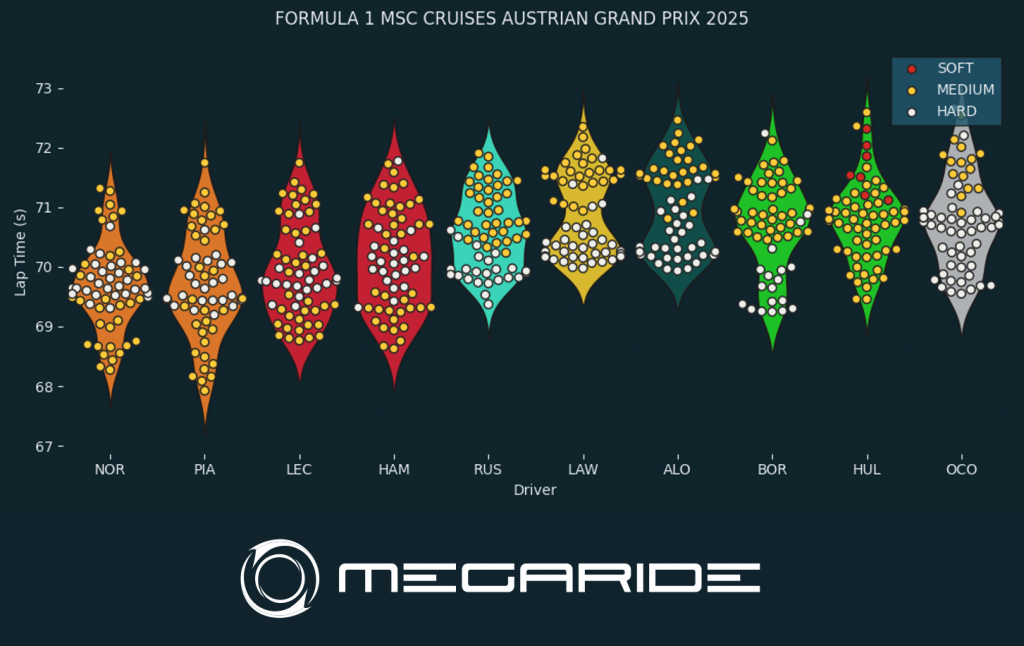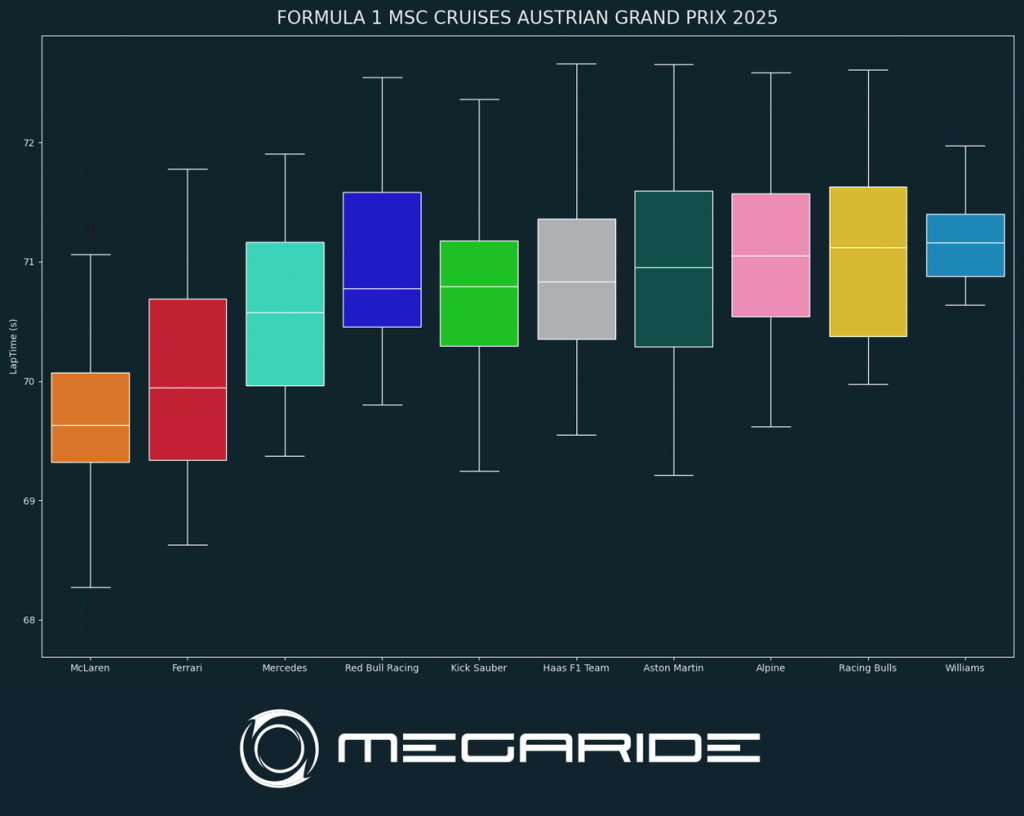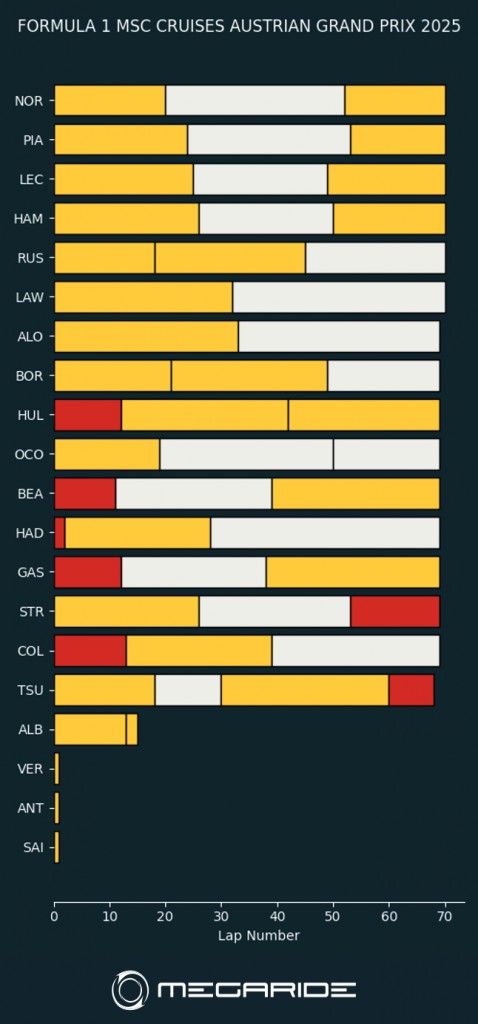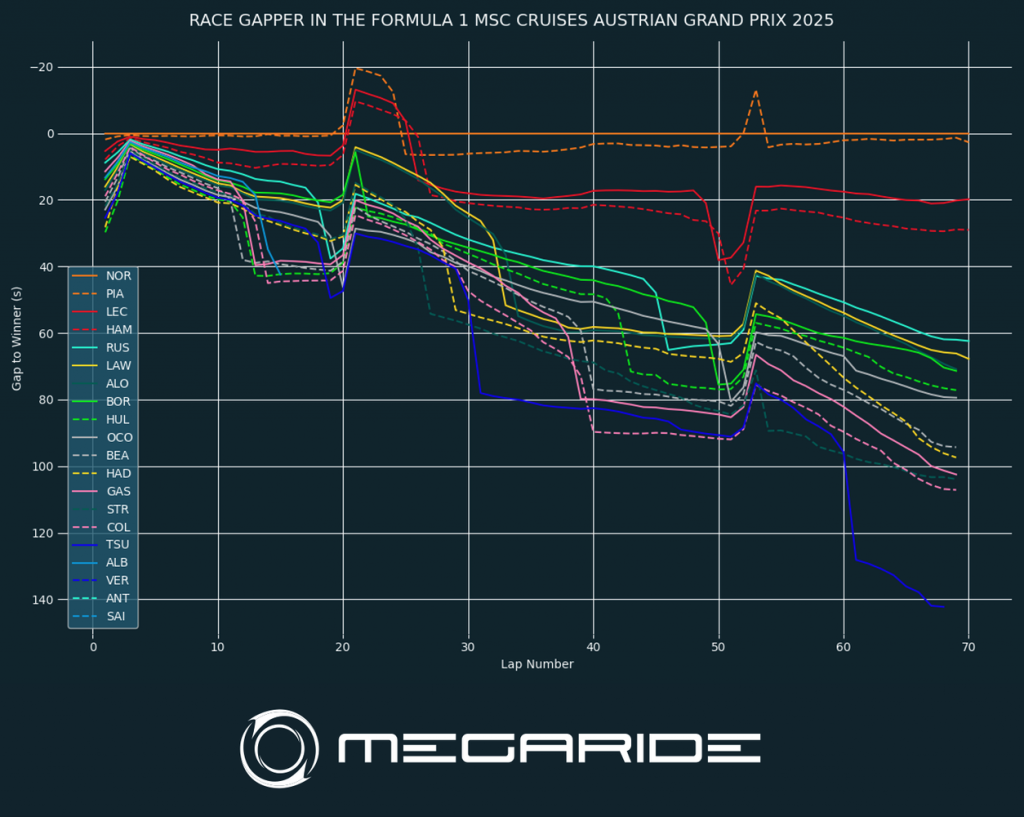
General overview
Yesterday’s Austrian Grand Prix will certainly not be remembered for spectacularity. Apart from the first stint of the race, in which the two McLarens battled it out, there was little space for excitement, and the race proceeded smoothly without any particular jolt. Yet another one-two of the year for McLaren, which occupied the two highest steps of the podium with Norris and Piastri, respectively; third step instead for Leclerc while Hamilton’s other Ferrari occupied the fourth place.
From the comparison of the violin plot immediately emerges the different level of performance between the top ten with the two McLarens with a big advantage over their rivals, the Ferraris immediately behind while much more distant Russel’s Mercedes, quite in difficulty in Austria after the resounding win in Montreal, also complicit in the high temperatures that do not favor the Brackley team. Excellent performances from Lawson and the two Sauber, soon to be Audi, drivers, both in points, with Bortoleto collecting the first career points in F1.

What we saw in the violin plot can also be shown distinctly in the ranking chart, with McLaren being the first force, followed by Ferrari and much more distant Mercedes and Red Bull, each with a single standard-bearer after the collision in Turn 3 on the first lap between Antonelli and Verstappen. Hard shot in perspective of the Championship for the Dutchman, who sees the possibility of challenging the two papayas receding.
Race strategy

The strategies were quite obvious: almost everyone opted for the double stop, apart from Lawson and Alonso, who, thanks to the single stop, succeeded in hitting the points zone. Due to degradation and very high temperatures, the two most widely used compounds were the medium and hard; very little use was made of the soft, which did not perform particularly well given the environmental conditions, except in qualifying, for a single lap.
Focus on drivers’ lap times

Looking at the race gapper, one notices almost three clusters of times: the first two, Norris and Piastri, in McLarens, then the two Ferraris, and then everyone else. The first two had a pace hardly within the reach of the others and were, especially in the first stint, in a tussle, even risking contact in Turn 4. In the second and third stints, they were more distant from each other but about 20 seconds ahead of Leclerc. The two Ferraris maintained, roughly, a gap of about 20 seconds from the second stint until the end, thus managing to achieve lap times at least similar to the first two, but without ever being able to catch up. Easy, however, to think that there was also a lot of management to safeguard both the tires but also the brakes, which were under a lot of stress here due to both the stop n go nature of the track and the thinner air, which made it more complex to manage the cooling of the system. Everyone else, however, has descending gap lines to signify a total lack of pace compared to the top four, with the gap gradually widening.

Looking instead at the graph of fuel corrected lap times, it is clear that in the first stint of the race, the two McLarens pushed or at least managed less than the two Ferraris, particularly at the beginning of the race, especially Leclerc, who had to do a lot of lift and cost. Second and third stints were more balanced, especially with Leclerc, who, after a slower introduction of the tire, achieved lap times on par with the first two, but without recovering much except at the end of the second race stint.
Conclusions
Now stop at Silverstone for the home Grand Prix for many drivers and teams. Easy to expect lower temperatures, as usual in the UK, but also more stress on the tires on one of the most demanding tracks for the high lateral loads to be sustained.